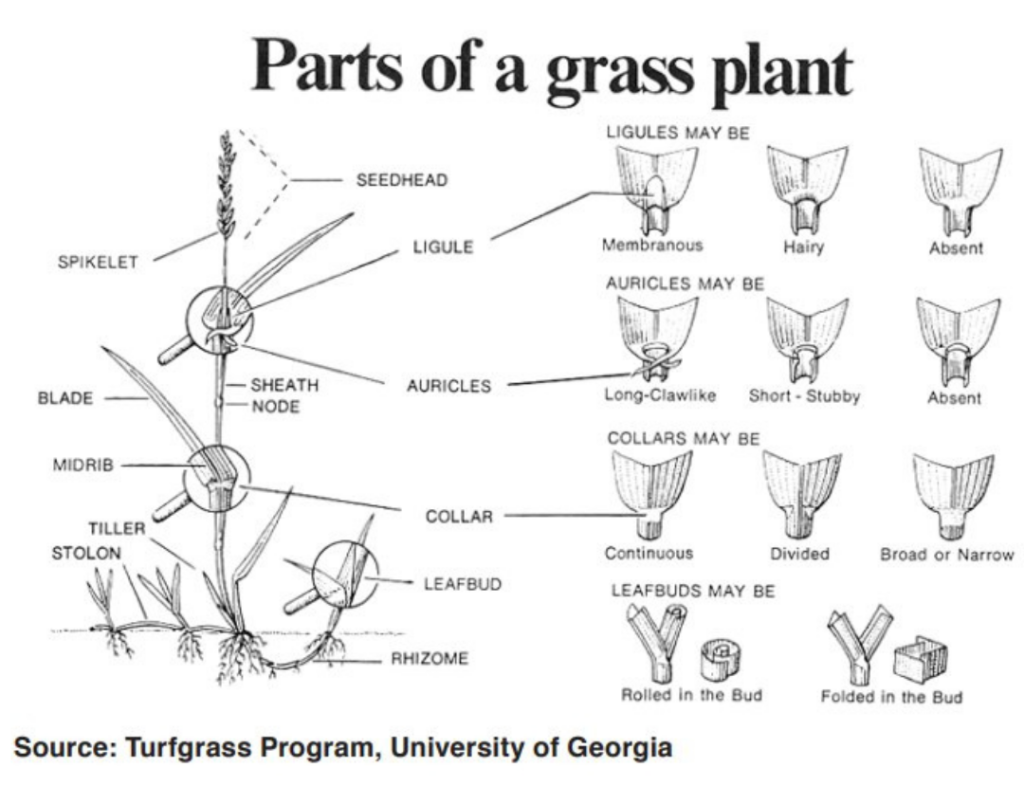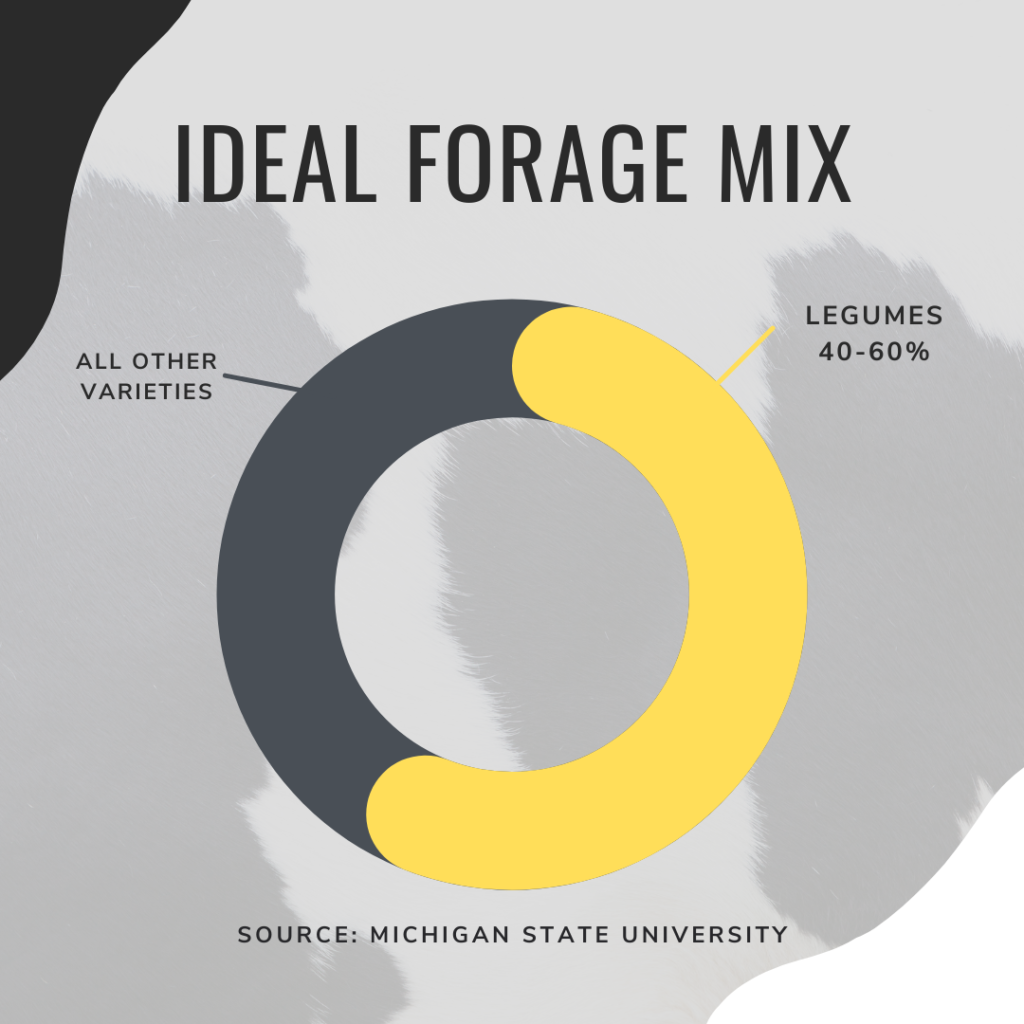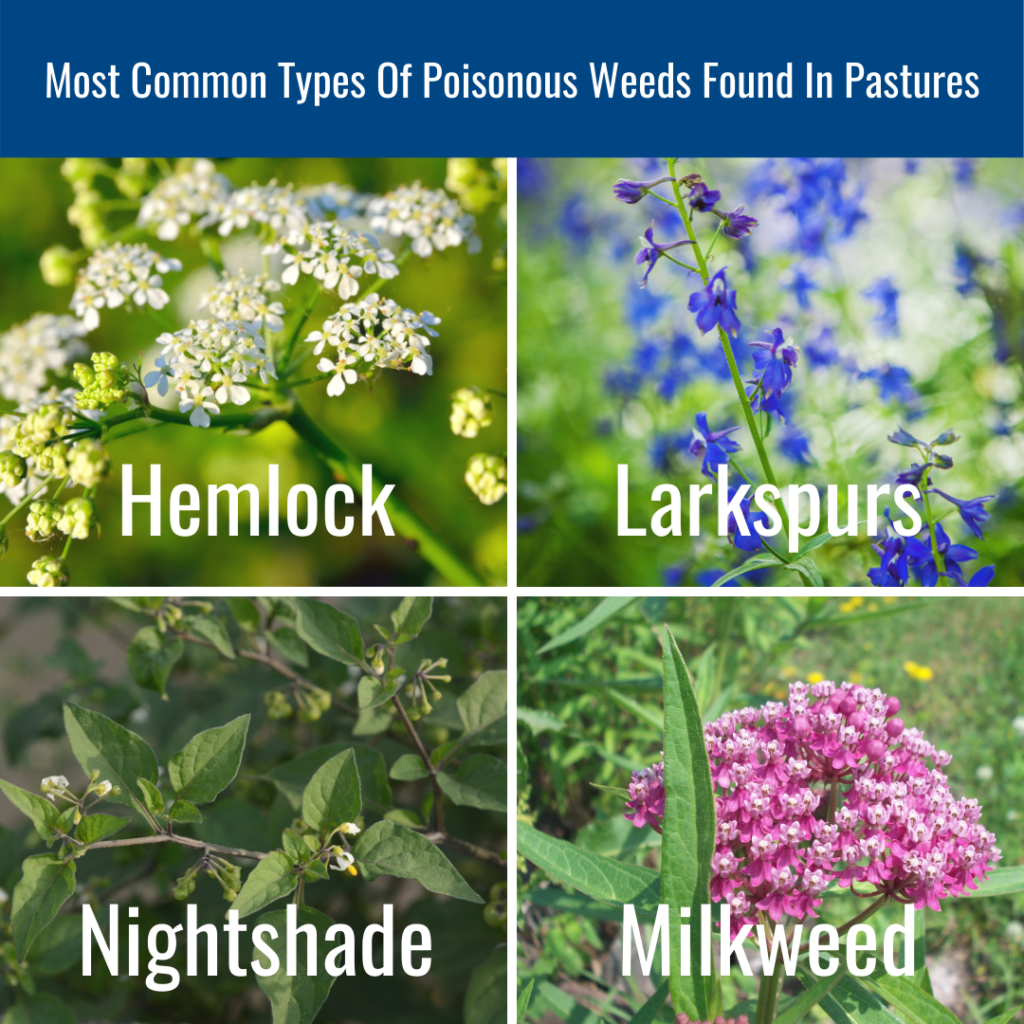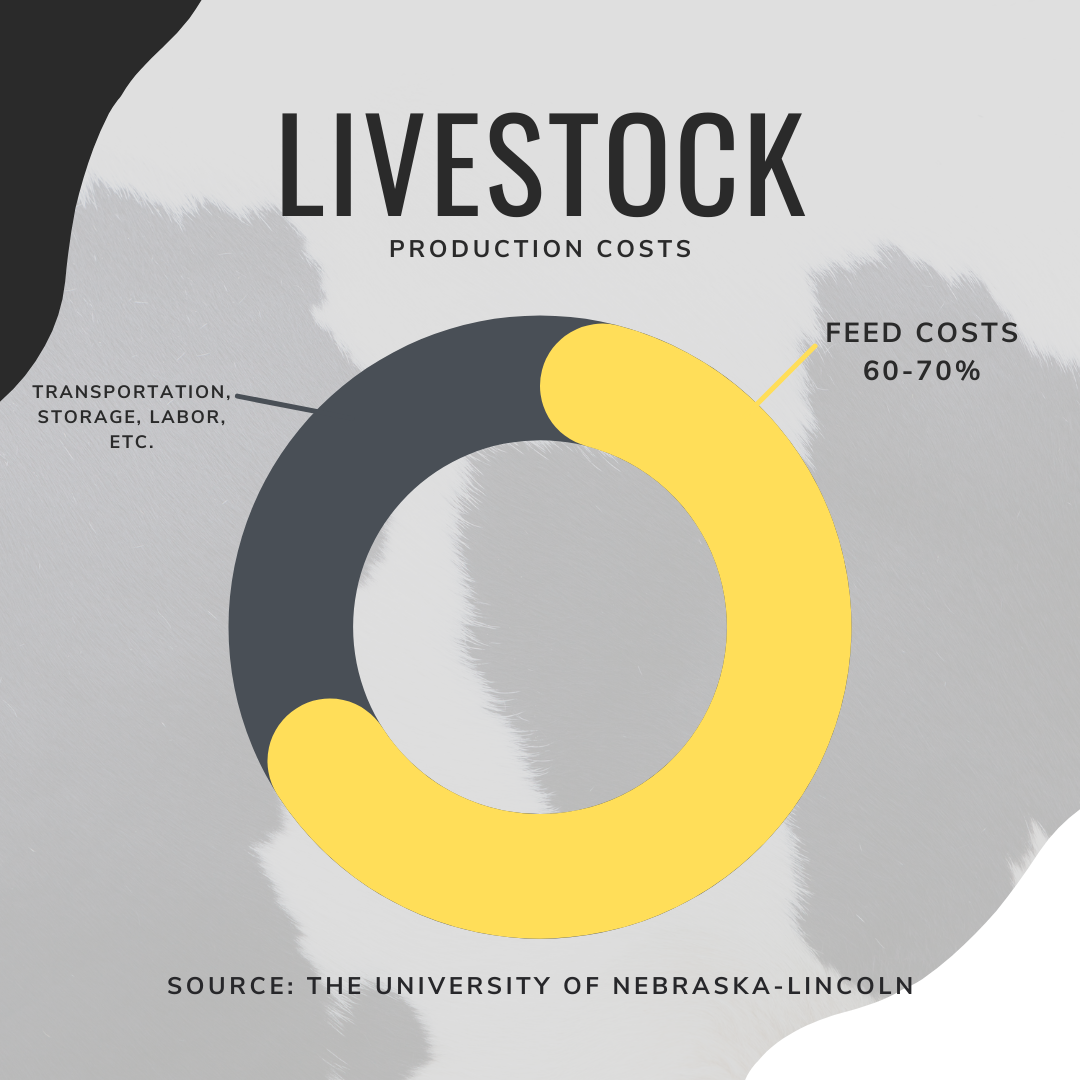Weeds are a reality of the natural world and part of every single pasture. No matter how well-groomed or managed grazing may be, weeds will always be present to some extent.
An efficient pasture, one with the welfare and nutritional needs of livestock in mind, has weed suppression taken into account.
Pasture management is important because it represents a portion of the animals’ diet. Remember, feeding costs account for well over 60-70% of total operating costs any given year. Poor forages can result in a host of issues, from inadequate nutrition to health issues to overall inefficiency and poor performance.
The types of forages that are grown and managed is a key to pasture-based nutrition. When weed suppression isn’t practiced, even a strategically seeded pasture can be easily overtaken. This will undo all that quality control and, depending on the weed types, reduces tonnage of available and palatable forage. When quality feed is reduced, it can lead animals to consume less nutritious forages, which can have an adverse effect on daily live weight gains.
Fortunately, there are many different ways to tackle this issue, one of which is using cover crops for weed suppression. Other natural means, including intensive grazing, rotations and even co-species grazing can all help make for a healthier and less weedy pasture.
What’s In A Weed?
Controlling weeds in a pasture begins with identifying what you want and what you don’t. According to Merriam-Webster, a weed can be defined as “a plant that is not valued where it is growing and is usually of vigorous growth.” This broad definition essentially means a weed is any undesired plant. For farmers, this especially includes those that are prolific or toxic in nature.
As with desirable forages, weeds come in a variety of categories and lifecycles including winter annuals, summer annuals, perennials and biennials.
Winter and summer annuals describe plants that complete their entire lifecycles in a single growing season. Dormant seeds sown the year prior are how these types proliferate. Biennials are similar but take two full years to complete their lifecycles.
Perennial plants are those that live for many seasons, with their root systems continuing to flower each year. These are the most difficult to control as they can spread by both roots and seeds, making it easy for them to evade removal.
Because weeds fall into all of these categories, identification is crucial for the best mode of eradication. Understanding these different plant types and their lifecycles can help establish effective pasture management tactics to accommodate for their growing season and lifecycle.
The best way to identify weeds is to be familiar with your particular region in a specific time of the year. Local university extension services are a great resource for this. You can also use your region to help establish your forage stand to withstand different seasons and avoid winterkill with seeding selection and tactics.
The North Carolina State University Cooperative Extension recommends that producers be familiar with the terminology used to describe the identifying features of certain leaves. Charts with photos and lifecycle information can also be helpful to have on hand when doing a pasture walk.

Scouting for pasture quality and weeds takes time and effort, but it is well worthwhile. The financial cost of weeds will vary greatly on factors such as region and management strategy – but it’s significant and real. According to a 2018 study from Cambridge University, the cost of noxious weed management and forage losses on privately-owned rangeland was $7,243 annually on an average grazing unit of 5,055 acres. Even these estimates are believed to be on the low end as this study only factored direct costs. Other studies have found costs to be even higher than this accounting for multiple other factors.
When you consider cost, the necessity of staying on top of weed spread becomes all the more important. In the case of Palmer amaranth, an invasive type of pigweed, each plant can produce over 100,000 seeds per plant (some studies have found this to be closer to 250,000). Though it is an annual variety, its rapid growth rate and prolific nature make it impossible to control without proper maintenance.
Remember The Livestock
Proper pasture management always keeps the nutritional needs and demands of the animals in mind. This is partly why weed suppression is so crucial – excessive weed growth inevitably pushes out the nutrient-dense forages you are trying to provide.
A simple way to establish a nutritious pasture is to focus on a good stand of different legumes. Legumes are a very high-quality feed for livestock, being good sources of things like energy and protein. In fact, Michigan State University recommends legumes make up anywhere from 40 to 60% of a pasture.

Clover is one common legume that is especially nutrient-dense and grows well in a wide variety of climates and pasture types. It’s also very palatable to animals – making overgrazing easy. To prevent them from being overtaken by grasses and weeds, a strong planting and management strategy is crucial.
As with many legumes, clover poses a risk for frothy bloat when overconsumed. This happens because these plants create a foamy layer in the rumen once they begin the digestion process, too much of this build up will trap the rumen gases and is often fatal without treatment. Berseem or Egyptian clover is one variety that doesn’t have this effect and can be grazed quite safely. Balansa clover is a low-bloating type that, while it can cause the issue, it very rarely ever does.
Another way to avoid issues is to ensure pastures are seeded with adequate “good” grazing grasses to balance out excessive legumes.
Another danger of weeds are the poisonous types that can crop up and proliferate. According to the U.S. Department of Agriculture, plant poisonings are a cause of major economic loss in the livestock industry. Approximately three to five percent of livestock are affected by consuming poisonous plants on western rangelands each year.
What types of poisonous weeds to look out for depends heavily on the specific region, but producers should familiarize themselves with some of the most common types. These include hemlocks, larkspurs, nightshade, milkweed and horsenettle.

While it is impossible to completely eliminate all poisonous plants, the odds can be reduced with good pasture management.
Methods Of Management
There are many ways that weeds can be controlled to fit just about any management style. The broad categories these fall into are preventative, cultural, biological, mechanical and chemical control, according to Oregon State University. One or more of these tactics can be used at a time.

Chemical control is what it sounds like, it’s using a type of herbicide to control or stop the growth of weed species. This should be done after scouting pastures to ensure they are applied at the proper times. Improper timing could be ineffective at best and kill newly seeded desirable forages at worst.

When equipment is used to control weeds, often with a seasonal mowing, it falls under mechanical control. This can be very effective when used with other management tools. For example, mowing pastures at the end of each season can amplify the effectiveness of cover crops by preventing weeds from ever going to seed in the first place.

Preventative weed control means good practices to help avoid the transfer and establishment of weed seeds. This could be as simple as cleaning equipment, and being mindful to feed weed-free forages to your animals.

Culture and biological control are similar methods that work well with one another. Weed suppression with cultural control is using pasture maintenance techniques that discourage proliferation. This encompasses many good practices such as forage rotation, not overgrazing and using competitive species to “push out” weeds and keep the soil fertile.

When biological control is used, it means that natural “enemies” of weeds are put in place. This could be co-species grazing such as using small ruminants to eat weeds that are unpalatable to cattle promoting younger, more desirable forages to grow. This could even involve using certain insects that target certain weed species as well.
Cover crop weed suppression falls into both of these categories and can be extremely effective.
Suppress Weeds With Cover Crops
By definition, they are “…grasses, legumes, and other forbs that are planted for erosion control, improving soil structure, moisture, and nutrient content, increasing beneficial soil biota, suppressing weeds, providing habitat for beneficial predatory insects, facilitating crop pollinators, providing wildlife habitat, and as forage for farm animals.”
When pasture lands are left unattended after the grazing season, weeds are likely to crop up in the springtime. Planting a cover crop in this interim can not only keep weeds at bay, but they can also add nutritional value.
One evaluation from Penn State found that cereal rye and oats, both excellent grass for grazing, had consistently favorable weed suppression rates. Even if these were seeded at just a fifth of their monoculture rates, their aggressive fall growth sufficiently slowed weed growth.
Clover, a highly nutritious legume, happens to be another excellent cover crop. One 2007 study published in the European Journal of Agronomy found the following:
“Clover species with superior weed suppression, like Persian clover, red clover, alsike clover, berseem clover and crimson clover also gave the strongest negative effect on dry matter accumulation of leek (reductions between 70% and 90%).”
Several other species of forbs, legumes and grasses also work as great cover crops. Some will even continue suppressing weeds even after they die off by releasing certain substances (allelochemicals, or natural herbicides), promoting weed-pathogenic fungi and even making nitrogen less available to them.
To determine the best fit for your pasture and grazing needs, consult with your agronomist, university extension service and fellow grazers for recommendations.

